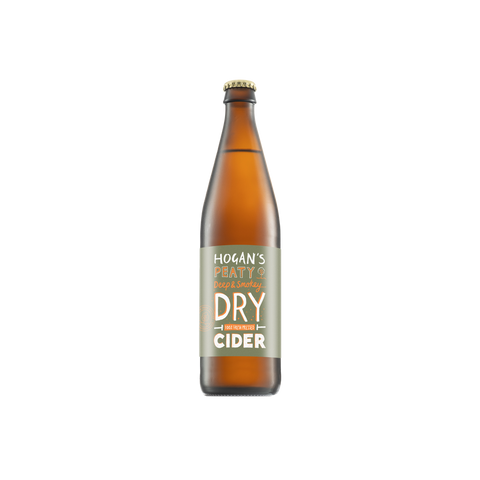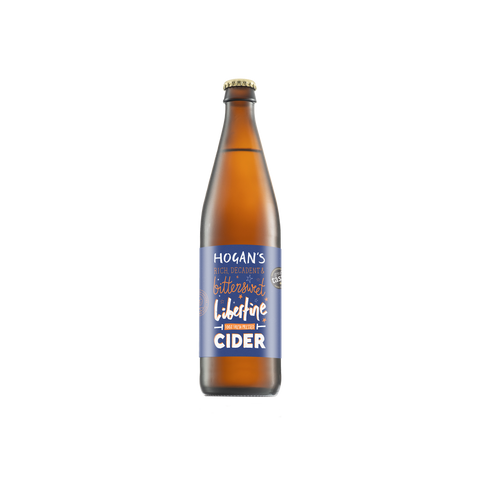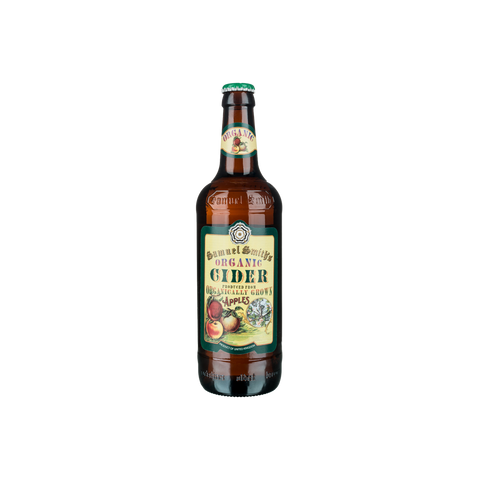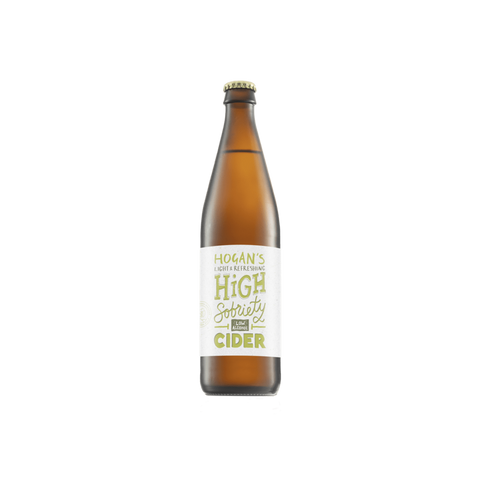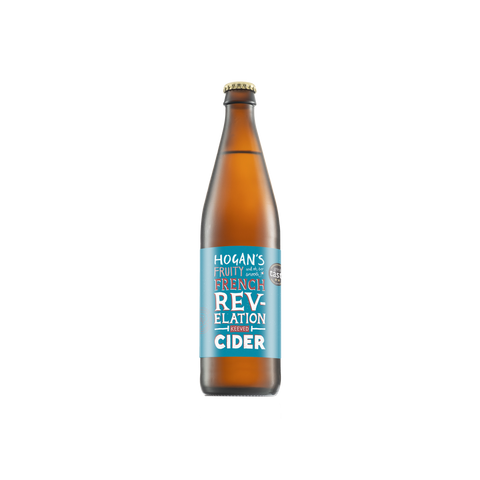Cider Offers and Deals
5 products
Frequently Asked Questions
Cider is a delicious, fruity drink made from fermented apple juice. It has a similar process to wine, where the juice from the apples is fermented by yeast to produce a delicious beverage! It can be made from one type of apple or a combination of different types of apple. The process starts with crushing the apples and extracting the juice, which is then fermented. Cider can range from dry to sweet, depending on the type of apples used and how long the fermentation process takes. It's a drink that's loved by so many people in so many countries, particularly those where apples are grown in great abundance!
Cider is a type of alcohol made from fermenting apples. It's different to non-alcoholic apple juice or cider, which don't have any alcohol in them. The alcohol content in hard cider comes from the yeast in the apple juice converting the sugar into alcohol and carbon dioxide during the fermentation process. The alcohol content of cider can vary quite a bit depending on how it’s made and what type of apples are used. But it typically ranges from around 3% to 8% ABV.
Ingredients: Cider is made mainly from apples, but some producers blend different apple varieties to get the flavour they want. Some ciders also have other fruits in them, like pears or berries, for extra flavour or sweetness. The main ingredient is apple juice, which provides all the sugar for the fermentation.
Fermentation: The cider making process starts with squeezing apples to extract their juice. This juice is often clarified to get rid of any solids and make it nice and clear. The yeast is then added to the juice to start the fermentation process. The yeast eats the sugars in the juice and turns them into alcohol and carbon dioxide. This can take anything from a few weeks to several months, depending on the type of cider you want to make.
Styles of Cider: There are different types of cider out there. They're all made differently, with different levels of sweetness, alcohol content and carbonation. So, here are some of the most common types of ciders:
Dry Cider: It's made by fermenting it to a low residual sugar level, which gives it a crisp, tart taste.
Sweet Cider: This is made by fermenting it to retain more residual sugars, so it tastes sweeter.
Still Cider: It's not carbonated, which gives it a smoother mouthfeel.
Sparkling Cider: It's carbonated to varying degrees, so it offers effervescence and a lively mouthfeel.
Ice Cider: Made from concentrated apple juice by freezing, resulting in a higher sugar content and a richer flavour.
Alcohol Content: The alcohol content of cider can vary quite a lot depending on how it's made, the yeast used, and whether it's been sweeterened up. On average, you'll find cider ranges from about 3% to 8% ABV, although some specialty ciders might have a bit more alcohol in them.
Flavor Profiles: Cider can have all kinds of flavors, depending on things like the apple used, how warm or cold the fermentation process is, the yeast used, and any extra stuff you might have added. You'll find cider comes in lots of different flavour profiles, including fruity, floral, earthy and sometimes spicy notes. The acidity and tannins in cider can vary, which adds to its complexity.
Overall, cider is a versatile, enjoyable alcoholic drink with a rich history. Its popularity is growing all the time as new styles and flavours are created.
Cider making is a pretty involved process. It starts with selecting the right type of apple and ends with bottling. Here’s a quick overview of the steps involved:
Apple Selection and Harvesting: The first thing to do is choose which type of apple to use. Different apples have different flavors and sugar contents. Once the apples are ready, it’s time to harvest them.
Washing and Crushing: Once the apples have been harvested, they are washed to remove any debris. After washing, the apple pulp is crushed or ground to make a pulp. This is sometimes done with a traditional press or modern grinding equipment.
Pressing: The crushed apple pulp is then pressed to extract the juice. Traditionally, this is done using a cider press which squeezes the pulp to extract the juice. What's left is the solid stuff, called pomace. It's used for animal feed or compost.
Fermentation: The juice is then moved to a fermentation vessel, which could be a tank, barrel or even a big glass container. At this stage, yeast is put in the juice. Yeasts can be wild (from apple skins or elsewhere in the environment) or a specific yeast added by the cider maker. The yeast eats the sugar in the apple juice, turning it into alcohol and carbon dioxide. This primary fermentation can take a few days or even a couple of weeks. It all depends on what you want and the conditions you're using for fermentation.
Maturation: Once the cider has finished fermenting, it can be put through a secondary fermentation process to refine its flavour and sometimes to increase its carbonation naturally. This can take anything from a few weeks to several months. During this time, the cider develops its flavour profile and any unwanted compounds can be broken down or settle out.
Racking: The cider is often racked during this process. This is when you move the liquid from one container to another, leaving behind any bits and pieces that accumulate at the bottom. This helps to clear the cider.
Blending: Lots of cider makers blend different batches to achieve a consistent flavour profile, and some also blend different types of apple juice to achieve the desired taste and complexity. Sparkling ciders are either carbonated naturally through secondary fermentation (bottle conditioning) or by adding carbon dioxide before bottling.
Bottling and Pasteurisation: Once the cider is ready, it is bottled. Sometimes it is filtered to achieve clarity. Some ciders are pasteurised to stop any further fermentation and to stabilise them for longer shelf life.
Aging and Selling: Once the cider is bottled, some is aged to develop more complex flavours, while others are ready to sell straight away. Each step in the process affects how the cider tastes and its quality overall, and many cider makers are proud of their specific techniques and recipes.
Both cider and beer are alcoholic drinks that are popular with many people. However, there are quite a few differences between them. Here's what sets them apart:
Ingredients
Cider is made from apples, which provide the main fermentable sugar. Some varieties may also include other fruits like pear or berries. Malted barley is used to make beer, which provides the fermentable sugars.
Production
Cider is fermented in large tanks or vats, whereas beer is made in smaller containers like barrels or kegs.
Flavor
Cider is often described as having a crisp, fresh apple taste. On the other hand, beer can have a wide range of flavors, depending on the malt used. Hops are added to give it a bitterness and flavor, and sometimes other grains like wheat or corn are included to alter the flavor and texture.
Fermentation
The fermentation process is similar for cider and wine, with the sugar in the apple juice being fermented by yeast into alcohol and carbon dioxide. The process is generally simpler and uses fewer ingredients and steps compared to beer.
The beer fermentation process is a little more complex, involving mashing the grains to convert starches into fermentable sugars, followed by boiling with hops for flavor and aroma, and then fermenting with yeast.
Flavor Profiles
Cider has a flavor that can vary considerably depending on the variety and amount of sugar fermented. It is generally fruitier in flavor than beer and can range from very sweet to very dry. The primary flavor is apple, but it can also have notes of other fruits, spices, or even earthy tones. The flavor profile is influenced by the type of apples used and any additional ingredients.
Beer offers a vast array of flavour profiles that may include notes of bitterness, malty sweetness, roasted character, fruity aroma or any combination thereof. These characteristics are influenced by the malt used, the hops, yeast strain or other adjuncts used in fermentation, and additional flavourings such as fruits, spices or herbs. In general, the flavour profiles of beers are more complex than those of ciders.
Alcohol Content
Nevertheless, the method of fermentation is more akin to that employed in the production of wine. Beer also typically has an ABV ranging from approximately 3% to over 12% in some strong ales and stouts, although most commonly falls within the 4% to 6% range.
Beer is typically carbonated, and the level of carbonation can significantly affect the mouthfeel and overall drinking experience.
Cultural and Historical Context
Cider has a strong historical presence in regions like the United Kingdom, France, and parts of the United States, particularly where apples are widely cultivated.
Beer has a more widespread historical presence globally, with a rich tradition that spans many cultures and continents.
The alcohol content of cider and beer can vary considerably, although they typically fall within similar ranges. The majority of commercial ciders and beers have an alcohol by volume (ABV) of approximately 4% to 6%. However, both can be found in versions that are either lighter or stronger, depending on the specific product and brewing or fermentation methods.
Cider
Typical ABV Range: 4% to 8%: It is notable that some specialty ciders, such as ice cider or ciders made with added sugars or honey (sometimes referred to as "cyser" in the case of honey use), can have an alcohol by volume (ABV) level of up to 12%.
Beer
Typical ABV Range: 3% to 12%With regard to beer, it is evident that the ABV range is considerably more extensive, spanning from 3% up to 12%. The aforementioned range encompasses a multitude of different styles, including light lagers and heavy stouts, in addition to IPAs. Furthermore, there are extreme examples of beer such as barley wines and imperial stouts that can exceed 12% ABV, and even more experimental beers that reach much higher alcohol levels.
Comparison
In general, the average cider and the average beer are quite comparable in terms of alcohol strength. The perception that cider may be stronger than beer can sometimes be attributed to the manner in which alcohol interacts with the sweet flavours present in some ciders, which may mask the taste of alcohol and facilitate consumption at a faster rate.
It is therefore evident that while both cider and beer can be crafted to have higher alcohol levels, they are generally comparable in strength, and neither is inherently stronger than the other. The strength of a beverage is more dependent on the specific product and style than on the beverage category itself.
Buying cider from Organica Food & Wine, a cider shop online, involves a few specific steps tailored to their website and offerings. Here's what you need to know to order cider online from Organica Food & Wine go smoothly:
1. Check the legal requirements
Age verification: Make sure that you meet the legal drinking age requirements in your country of residence.
Shipping Restrictions: Verify that Organica Food & Wine can ship to your state or country, as alcohol shipping and cider delivery vary greatly.
2. Browse the cider selection
Browse the catalogue: Go to the cider section of the Organica Food & Wine website.
Product details: You can read detailed descriptions, tasting notes and perhaps reviews from other customers by clicking on individual cider products. This way you can have a better understanding of the flavour profile and quality of each cider.
3. Use available resources
Customer service: Consider contacting Organica Food & Wine Customer Service if you have specific questions or need recommendations. They can provide guidance based on your preferences and their current inventory.
Newsletters or Alerts: If available, sign up for newsletters or alerts. These can keep you up to date with new arrivals, exclusive offers or special editions of a cider.
4. Consider purchase options
Single bottles vs. packs: Depending on your interest level and the occasions you're buying for, you may want to choose single bottles to try different varieties, or opt for packs once you know what you like.
Cider offers and deals: Do not forget to look for offers and deals we provide on cider sales when seasonal occasions and periods.
5. Review Shipping Policies and Costs
Shipping Costs: Look for information on shipping costs; we want your cider delivery in the UK and the other countries to be as smooth as possible.
Delivery Times: Check how long it will take for your order to arrive and plan accordingly, especially if you need the cider delivered by a specific date.
6. Place and track your order
Checkout: Add your chosen cider(s) to the basket, proceed to checkout and fill in the required information (delivery address, payment method, etc.).
Order Confirmation: Once you have placed your order, you should receive a confirmation email with details and a tracking number so you can monitor the delivery status.
7. Receiving your order and storage tips:
Proper storage: Once you have received your cider, store it in a cool, dark place. Most ciders are best enjoyed fresh, although some can be aged in the right conditions.
Unit C3
Leyton Industrial Village
Argall Avenue
London E10 7QP
Store Hours
Sat-Sun: Closed
Mon-Fri: 09:00 - 17:00
Closed
Closing at 5pm
Closing at 5pm
Closing at 5pm
Closing at 5pm
Closing at 5pm
Closing at 1pm

